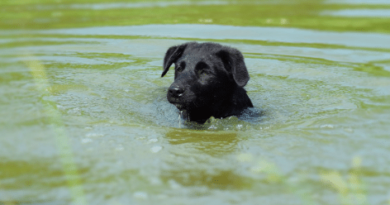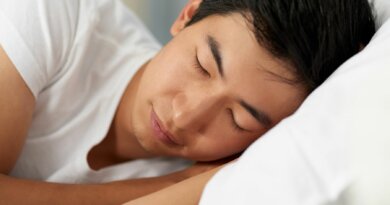Fall Allergies and Sinusitis
Autumn has arrived, and you don’t feel so good. You can’t stop sneezing and sniffling. The return of cool weather leaves you feeling not invigorated but miserable.
What’s going on? You may have a pollen allergy, a.k.a. allergic rhinitis or hay fever. Thirty million Americans do, and symptoms typically flare in fall.
Like all allergies, hay fever stems from a glitch in the immune system. Instead of attacking harmful foreign substances such as bacteria and viruses, it tries to neutralize “invaders” that ordinarily are quite harmless — in this case weed pollen grains that fill the air from August through October (up to the first frost).
In someone with hay fever, inhaling these tiny particles triggers a cascade of biochemical reactions, resulting in the release of histamine, a protein that causes the all-too-familiar symptoms. In addition to sneezing, congestion, and fatigue, histamine can cause coughing; post-nasal drip; itchy eyes, nose, and throat; dark circles under the eyes; and asthma attacks.
Ragweed: The Prime Cause of Fall Allergies
Many plant varieties can cause hay fever, but the 17 varieties of ragweed that grow in North America pose the biggest threat. Three out of four people who are allergic to pollen are allergic to ragweed.
A hardy annual, ragweed thrives just about anywhere turf grasses and other perennials haven’t taken root — along roads and riverbanks, in vacant lots, and so on. Over the course of a single year, one ragweed plant can produce a staggering one billion grains of pollen. And it doesn’t fall harmlessly to the ground. It floats on the breeze. Pollen has been found hundreds of miles out to sea and two miles up into the atmosphere.
Given the profusion of pollen, what can you do to limit your symptoms?
Conventional wisdom says that people with hay fever should stay indoors during morning hours, because pollen counts are highest then. Not so, says Neil Kao, MD, assistant professor of medicine at the University of South Carolina School of Medicine in Greenville. “I’ve reviewed 50 years of medical literature on this, and there is simply no proof that hay fever sufferers can minimize their symptoms by staying indoors or going outdoors at certain times of day. This is a myth that even many general physicians believe.”
But there are effective ways to curb symptoms of hay fever, including avoidance strategies and — if that’s not enough — medical therapy. Here are six proven strategies:
1. Make Your Home a Pollen-Free Haven
As much as possible during ragweed season, keep your windows shut and the air conditioner on (and do the same while in your car). “Running the air conditioner will also help remove moisture from the air, which helps prevent the growth of mold,” says James Stankiewicz, MD, chairman of the department of otolaryngology at Loyola University Chicago Stritch School of Medicine. “Mold can aggravate hay fever symptoms.”
HEPA air filters can be helpful, especially if your home is carpeted. One per room is best, says Christine Franzese, MD, assistant professor of otolaryngology at the University of Mississippi Medical Center in Jackson. If that’s not in the cards, get one for the room where you spend most of your time — presumably your bedroom. You might also consider getting a HEPA vacuum cleaner — otherwise, vacuuming might just stir up pollen rather than remove it.
2. Wear a Mask
A surgical-style facemask isn’t going to be 100% effective at protecting you from pollen — “you’d need a full-body hazmat suit to do that,” says Franzese. But a mask can cut your exposure substantially, and is worth donning when you venture outside to garden, mow the lawn, exercise, and so on.
Look for a facemask with an “N95” rating from the National Institute for Occupational Safety and Health (NIOSH). You should be able to pick one up at a drugstore or home supply store.
“I know it’s no fun to wear a mask, but it really will help you from breathing in all that pollen and mold,” says Kao. “The key is to use it properly. It should fit tightly around the mouth and nose — feel around it to make sure no air is coming in around the edges.”
3. Wash Up
Whenever you come in from outside, wash your face and hands. If you’ve been exposed to outdoor air for quite a while, shower and change into fresh clothes.
If you share your home with a furry friend that ventures outdoors, brushing and bathing it outside will help prevent pollen from being tracked inside.
4. Watch What You Eat
Because they contain proteins similar to the ones in ragweed, certain foods can exacerbate allergy symptoms. Steer clear of banana, melons, and chamomile.
5. Rinse Out Your Nose
Usingg a salt-water solution to wash pollen from your nostrils and sinuses — can be very effective at curbing hay fever symptoms. A quick spritz in each nostril is not enough, experts say. Use a neti pot or an over-the-counter irrigator.
6. Track Pollen Counts
On days when the pollen count is especially high, stay indoors as much as you can. For reliable pollen (and mold spore) counts in your area, go to https://www.aaaai.org/nab/index.cfm.
If these pollen-avoidance strategies fail to bring relief, medical therapy may be in order. Nonprescription antihistamines, such Claritin and Zyrtec, are generally the first choice for mild to moderate symptoms (no need to pay extra for brand names, as generics cost less and work just as well).
If you’re bothered by congestion as well as sneezing and a runny, itchy nose, adding a decongestant such as Sudafed should help. There are also antihistamine-decongestant combinations available. These products generally include a “D” in the name, as in Tavist D. (If you have high blood pressure, ask your doctor if taking a decongestant is OK. Some cause a potentially dangerous rise in blood pressure.)
For severe or persistent symptoms, a steroid nasal spray (Flonase, Nasonex, and so on) may be helpful. If you’ve developed a sinus infection, a course of antibiotics might be needed. Another option that works well for some patients is a leukotriene inhibitor, such as Singulair or Accolate. These medications block the release of leukotriene to help reduce inflammation and other symptoms of allergic rhinitis. If symptoms are especially troublesome, you might need immunotherapy (allergy shots).
Experts say the best approach may be to start treatment early and combine various therapies Whichever prevention strategies and medications you decide upon, don’t wait until the last minute to start using them.
If you had hay fever in previous years, says Kao, odds are you’ll have it again this year. Starting medications before symptoms appear can make them less severe and not last as long.




